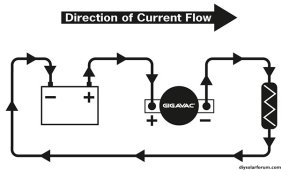hwy17
Anti-Solar Enthusiast
I'm considering using polar contactors and separate charge and discharge circuits.
A polar contactor comes with a + and - terminal.
Is there a standard for the directionality of these markings? Is it that in a battery to load configuration, on the negative side, you would face the negative marked terminal of the contactor towards the negative terminal of the battery?
And then on a charging circuit, on the negative side, you would would face the negative terminal towards the charger?
Is there any reason you should actually place the contactor on the positive side for either a charging or a load circuit? I'm just used to seeing FET BMS on the negative so I assume I will contactor the negative on both circuits.
A polar contactor comes with a + and - terminal.
Is there a standard for the directionality of these markings? Is it that in a battery to load configuration, on the negative side, you would face the negative marked terminal of the contactor towards the negative terminal of the battery?
And then on a charging circuit, on the negative side, you would would face the negative terminal towards the charger?
Is there any reason you should actually place the contactor on the positive side for either a charging or a load circuit? I'm just used to seeing FET BMS on the negative so I assume I will contactor the negative on both circuits.



